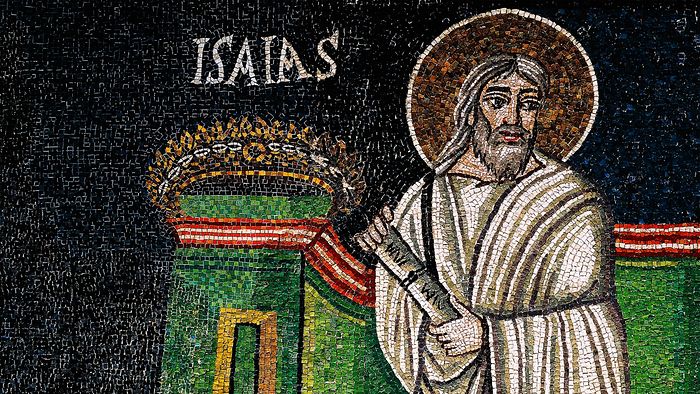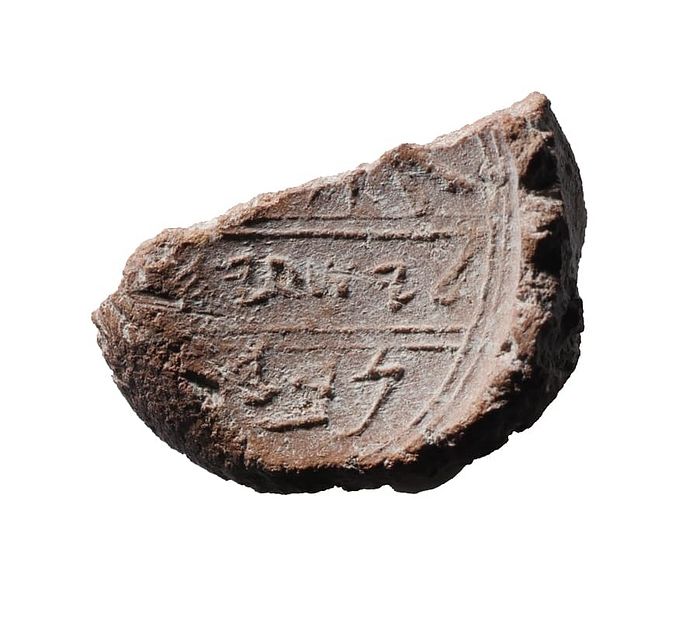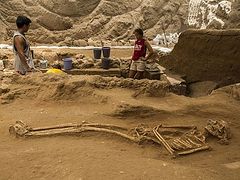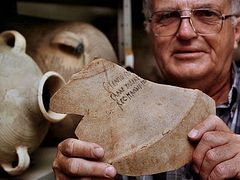Jerusalem, February 27, 2018
A recent article from “Biblical Archaeology Review” makes the claim that archaeologists have recently uncovered the first physical evidence for the existence of the holy Prophet Isaiah.
As Candida Moss writes in a Daily Beast article, the proposed evidence is a .4 inch-long piece of clay impressed with a seal, which appears to bear the inscription “Isaiah the Prophet.” The small evidence was found when a team headed by Eliat Mazar decided to excavate a previously undisturbed pile of debris.
“The debris contained figurines, pottery fragments, pieces of ivory, and some clay seal impressions, known as bullae. These impressions were created when the owners of the seals stamped their seals into the soft clay and include the mark of King Hezekiah,” Moss writes.
Among these bullae is that of “Yesha‘yah[u] Nvy[?],” which Mazar explains would be most straightforwardly translated as “Isaiah the Prophet.”
The holy Prophet Isaiah lived 700 years before the birth of Christ, and was of royal lineage. Isaiah’s father Amos raised his son in the fear of God and in the law of the Lord. He was called to prophetic service during the reign of Oziah [Uzziah], king of Judea, and he prophesied for 60 years during the reign of kings Joatham, Achaz [Ahaz], Hezekiah and Manasseh. The start of his service was marked by a vision of the Lord God, sitting in a majestic heavenly temple upon a high throne. He is best known for his prophecy of the Virgin birth of Christ: Therefore the Lord himself shall give you a sign; Behold, a virgin shall conceive, and bear a son, and shall call his name Immanuel (7:14).
St. Gregory of Nyssa wrote that the Prophet Isaiah knew “the mystery of the religion of the Gospel” more perfectly than any of the other prophets. St. Jerome describes him as an “evangelist,” and St. John Chrysostom wrote that “the mouth indeed was Isaiah’s, but the oracle was wafted from above.”
The newly-found evidence, possibly his signature, is arguably evidence of his role in 8th-century-BC Jerusalem. The Bible describes Isaiah as a counselor to the king, and could thus explain why he would have his own seal. Moreover, his seal was found close to where a seal of King Hezekiah was earlier found.
Mazar does recognize in her article that there are problems with the seal impression, namely that some of the letters appear to have broken off. Also, the seal identifies Isaiah by his profession rather than by his father, as do most other seals that are yet known.
Robert Cargill, a professor at the University of Iowa, self-described skeptic, and the editor of “Biblical Archaeology Review” has said that, despite his career of debunking false archaeological claims, he believes Mazar has indeed found the seal of the Prophet Isaiah and “the first archaeological and extra-biblical reference to the prophet.”





